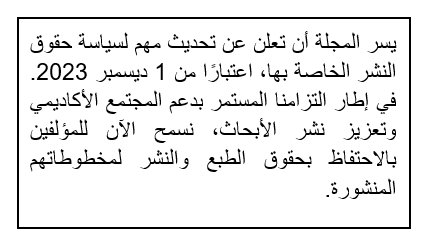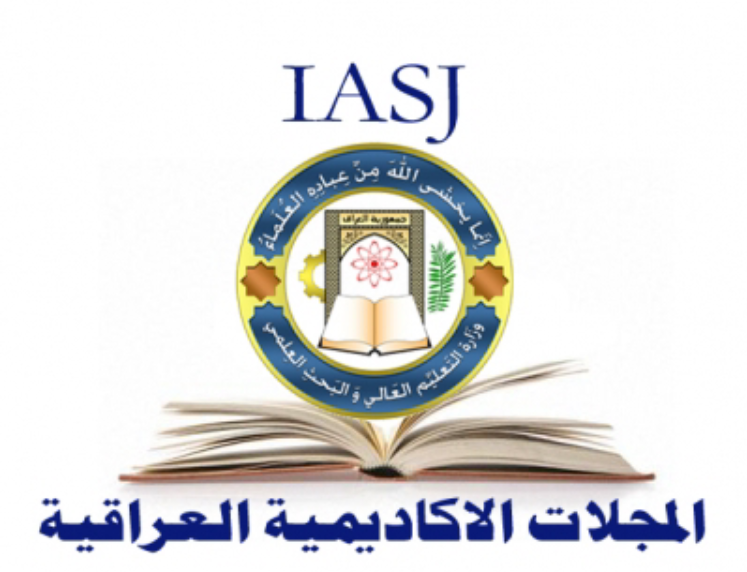الاقتصاد الصيني وتأثيره في التجارة الدولية ( دراسة في دور ميناء كَوادر )
DOI:
https://doi.org/10.30907/jj.v0i60.484الكلمات المفتاحية:
الصين، الولايات المتحدة الامريكية، ميناء كوادر، الاقتصاد، التجارة الدولية.الملخص
إن سياسة الصين الاقتصادية وماتمتلكه من قدرات هائلة تعمل على وفق استراتيجية توسعية ولاسيما في استثمار المشاريع الخارجية، فقد شهدت السنوات العشر الماضية تطوراً كبير في مقومات القوة الشاملة، وخاصة في المجال الاقتصادي، ففي عام 2013 اطلقت الصين أكبر مبادرة في العالم، تمثلت بمشروع الحزام والطريق (BRI) الذي يربط مايقارب 70 دولة، فقد برز من خلال هذا المشروع منطقة في غاية الاهمية وهي (ميناء كَوادر) في باكستان، حيث توجهت الصين صوب تلك المنطقة وايلاء الاهمية القصوى التي تصب في مصلحتها بالدرجة الأولى بغض النظر للفائدة الباكستانية الكبيرة، وهذا ينسجم مع تطلعاتها المستقبلية وخاصة بعد كسر الاحتكار الاقتصادي للغرب وتحديدا ( الولايات المتحدة) كونها قوة في حالة أفول ولم تعد القوة المهيمنة اقتصادياً، الذي أدى بدوره إلى تولد هاجساً من الخوف من هذه القوة وماتمثله من تهديد محتم على الاقتصاد العالمي بأسره، وماتسعى اليه مستقبلا في توظيف كَوادر ليس فقط في تطوير اقتصادها ومزاحمة الدول الاخرى تجارياً، انما تأخذ حيزا آخر يرمي الى زيادة الوجود العسكري الصيني في المنطقة، وخاصة ان الصين مستمرة بالعمل على تطوير كل ماهو متاح أمام طريقها الريادي في المنظومة الدولية من أجل تمييز الصين كدولة كبرى و ربما دولة عظمى .
المراجع
(1) انطوان برونيه و جون بول جيشار، التوجه الصيني نحو الهيمنة العالمية الامبرالية الاقتصادية، ترجمة: عادل عبدالعزيز احمد، المركز القومي للترجمة، مصر-القاهرة، الطبعة الاولى، 2016.
(2) بي جانغ خونغ و جينغ ون، التنين يحلق- دراسات حول الاستثمارات الصينية الخارجية، ترجمة : حميدة محمود فرج، دار صفافة للنشر، مصر- القاهرة، الطبعة الاولى، 2016.
(3) د. حميد شهاب احمد و زيدون سلمان محمد، تطور القوة والقدرات الصينية بعد الحرب الباردة ، مجلة العلوم السياسية، كلية العلوم السياسية، جامعة بغداد، العراق، العدد 56، 2018.
(4) د. حميد شهاب احمد و زيدون سلمان محمد، التحدي الصيني للهيمنة الامريكية، دار سما للنشر والتوزيع، مصر- القاهرة، الطبعة الاولى، 2019.
(5) عمرو عمار، نهاية القرن الامريكي وبداية القرن الاوراسي (الحزام الاقتصادي وطريق الحرير)، دار سما للنشر والتوزيع، مصر – القاهرة، الطبعة الاولى، 2018.
(6) غراهام اليسون، حتمية الحرب بين القوة الصاعدة والقوة المهيمنة، تعريب: اسماعيل بهاء الدين سليمان، دار الكتاب العربي، لبنان- بيروت، الطبعة الاولى، 2018.
(7) مغاوري شلبي علي، الصين والاقتصاد العالمي: مقومات القوة وعوائق الاندماج، مجلة السياسة الدولية، مؤسسة الاهرام، القاهرة- مصر، العدد 167، 2007.
(8) منى يونس حسين، دور الادخار في تحديد حجم الاستهلاك وحجم الطلب في الصين للاعوام 2001-2009، مجلة بحوث عربية ، مركز دراسات الوحدة العربية، بيروت- لبنان، العددان 53-54، 2011.
(9) وائل محمد اسماعيل، التغيير في النظام الدولي، مكتبة السنهوري، العراق- بغداد، الطبعة الاولى، 2012.
List of Sources and reference:
I- Antoine Brunet and John Paul Geshard, The Chinese trend towards economic imperialist global hegemony, translated by: Adel Abdel Aziz Ahmed, National Center for Translation, Egypt-Cairo, First Edition, 2016.
II- Bi Jang Khong and Jing Wen, Dragon Fly - Studies on Chinese Foreign Investments, translated by: Hamida Mahmoud Farag, Safafa Publishing House, Egypt - Cairo, First Edition, 2016.
III- Dr. Hamid Shihab Ahmed and Zaydon Salman Muhammad, The Development of Chinese Power and Capabilities after the Cold War, Journal of Political Science, College of Political Science, University of Baghdad, Iraq, Issue 56, 2018.
IV- Dr. Hamid Shihab Ahmed and Zaydon Salman Muhammad, The Chinese Challenge to American Hegemony, Sama Publishing and Distribution House, Egypt - Cairo, First Edition, 2019.
V- omer Ammar, The End of the American Century and the Beginning of the Eurasian Century (The Economic Belt and the Silk Road), Sama House for Publishing and Distribution, Egypt - Cairo, First Edition, 2018.
VI- Graham Ellison, The inevitability of the war between the rising power and the hegemonic power, Arabization: Ismail Bahaa El Din Soliman, Arab Book House, Lebanon - Beirut, First Edition, 2018.
VII- Maghari Shalaby Ali, China and the global economy: the components of power and the obstacles to integration, Journal of International Politics, Al-Ahram Foundation, Cairo - Egypt, Issue 167, 2007.
VIII- Mona Yunus Hussein, The Role of Savings in Determining the Volume of Consumption and the Volume of Demand in China for the Years 2001-2009, Arab Research Journal, Center for Arab Unity Studies, Beirut - Lebanon, Issues 53-54, 2011.
IX- Wael Muhammad Ismail, Change in the International System, Sanhuri Library, Iraq - Baghdad, First Edition, 2012.
منشور
إصدار
القسم
الرخصة
الحقوق الفكرية (c) 2020 Hamid Shihab Ahmed

هذا العمل مرخص بموجب Creative Commons Attribution 4.0 International License.






 ©️ 2023 The Author(s). Published by College of Political Science, University of Baghdad. This is an Open Access article distributed under the terms of the
©️ 2023 The Author(s). Published by College of Political Science, University of Baghdad. This is an Open Access article distributed under the terms of the 












